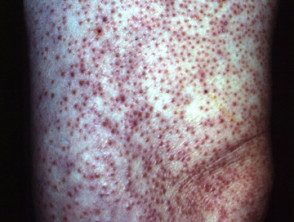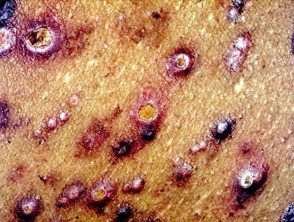What is Kyrle disease?
Kyrle's disease was first described in 1916 by Kyrle as 'hyperkeratosis follicular and follicular in the body penetrating and identified as a perforating disease. To this day, controversy remains over the classification of Kyrle's disease: is it a distinct disease entity, part of the acquired perforation spectrum? skin disease or a subtype of acquired perforating collagenosis?
Currently, two major perforating diseases include reactive perforating collagenosis and elastosis perforans serpiginosa. In some literature, acquired perforating dermatosis is a third major group and is a general term for cases of perforating disease arising in adults, usually associated with a systemic disease.
Kyrle's disease is characterized by the formation of large papules with central curb plugs and is often associated with hepatic, renal or diabetic disorders. It can affect men and women throughout life, although the average age at presentation is 30 years.
What causes Kyrle disease?
The cause of the disease is unknown. Some cases seem to be idiopathic (no known triggers), or inherited. What has been found is that Kyrle disease appears to occur more frequently in patients with certain systemic disorders, these include:
- Mellitus diabetes
- Renal disease (chronic kidney failure, albuminuria, elevated serum creatinine, abnormal creatinine clearance, polyuria)
- Liver abnormalities (alcoholic cirrhosis)
- Congestive heart failure
What are the signs and symptoms?
The lesions begin as small papules with silvery scales that eventually grow to approximately 1.5 cm in diameter to form red-brown. nodules with central keratin plug (cornea). Multiple injuries can get together to form large keratotic plates. Lesions occur primarily on the legs, but also develop on the arms and the head and neck region. Palms and soles are rarely affected. Without treatment, lesions heal spontaneously, but new ones continue to develop.
The lesions are not painful, but patients may experience intense pruritus (itch).
Kyrle's disease

Kyrle's disease

Kyrle's disease

Kyrle's disease
How was the diagnosis made?
There are many other disorders characterized by papules or nodules with central keratotic plugs and crusts. The deep penetration of keratotic plugs, the size and irregularity, the age of appearance and the distribution of the lesions should help in the diagnosis. It is also essential to examine and evaluate any underlying conditions, such as diabetes, liver and kidney disease.
The diagnosis is confirmed by histopathology of a skin biopsy, showing incomplete keratinization and a hyperkeratotic, parakeratotic plug.
What treatment is available?
The goal of treatment should be to treat the underlying disease if associated. Rapid improvement and resolution of lesions are often seen once the underlying disease is treated.
The lesions may heal on their own without any treatment, but new lesions often develop. Treatments that have been used to treat and reduce injuries include:
- Isotretinoin
- High doses of vitamin A
- Tretinoin cream
Emollients and oral antihistamines are useful in relieving pruritus.

